One of the great things about dogs is their pack mentality and the ability to adapt to change by forming groups where they work together toward something.
In the case of stray dogs, this can work great in their favour when it comes to scavenging and finding food from other people.
They will gather in groups and settle in a small place where they will usually stay for a while.
In this story, we will talk about a group of rescuers who stumbled upon a very large pack when they were attempting to rescue a stray dog.
A Huge Surprise
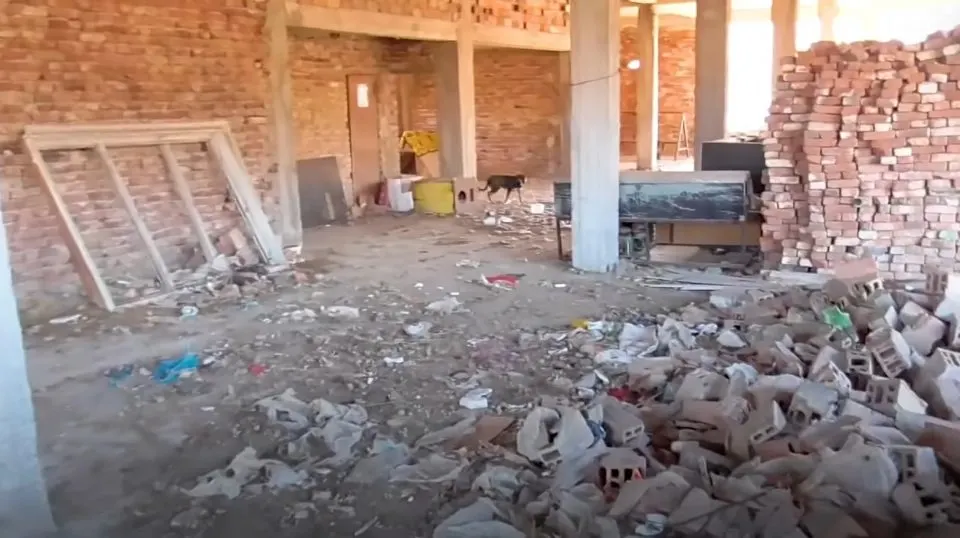
When Robert Altermoser, a rescuer from EveryDayStray, saw a stray dog, he wanted to help and rescue him, so he decided to follow.
He noticed that he was very timid and was moving away from him at a fast pace, but they did not want to give up on him.
Robert told The Dodo: “We basically just saw a dog running into this building, and sometimes you have a funny feeling if you see something.”
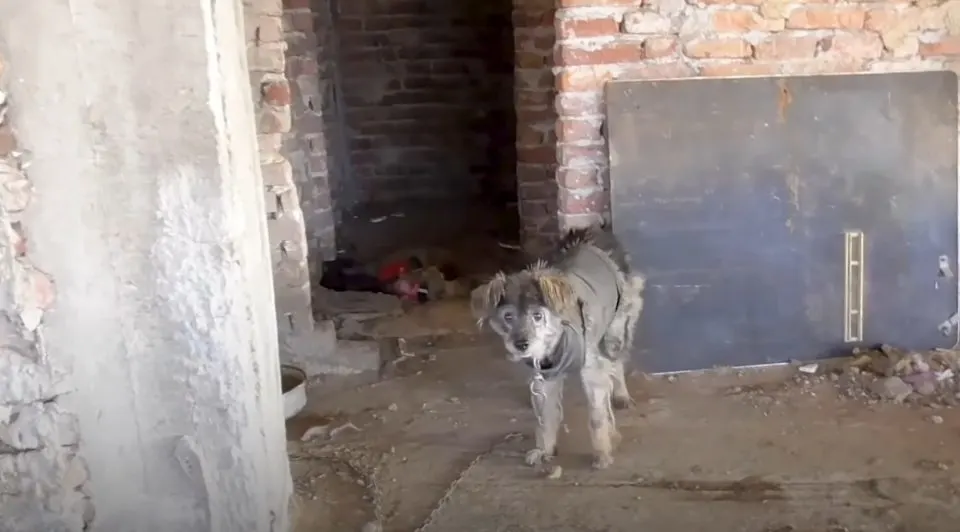
They were getting close to the abandoned building and started hearing barking. After entering, they were shocked by what they saw.
One thing that came as a particular surprise was that there were also quite a few puppies there as well.
Robert’s Rescue Plan
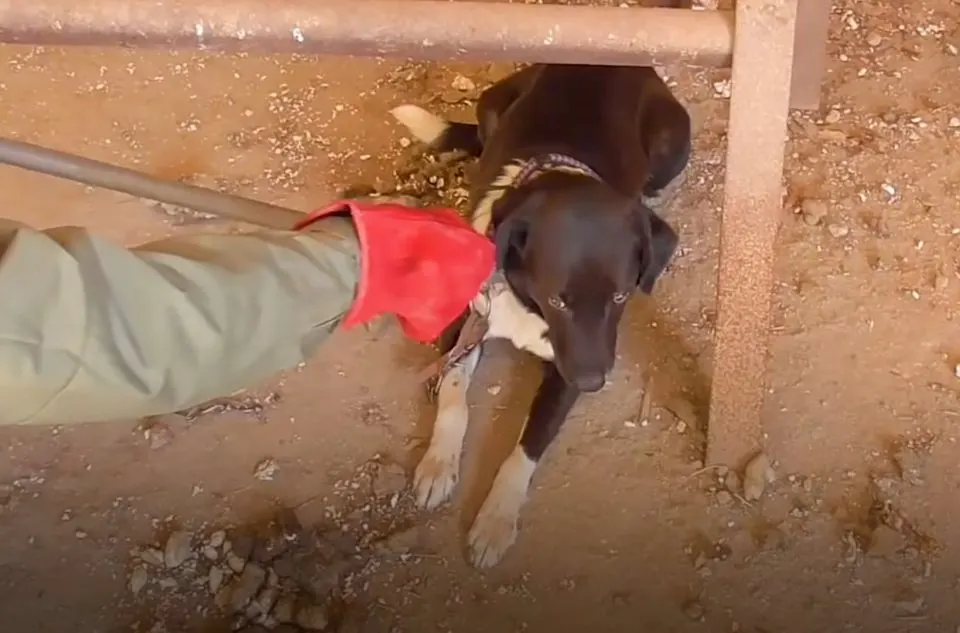
As someone who has worked for over two years as a volunteer, and spent time rescuing animals, this was heartbreaking for him.
His first task was to help the puppies who clearly needed it the most. After rescuing them, he took them to a vet, where they received a checkup and treatment.
However, the mission was not done yet. Robert was not satisfied with just saving the puppies. He wanted to catch them all and give them a chance at a new life.
One thing he decided to do first was check with the local police to see if it was okay for him and his partner to take all of the dogs from that horrible area.
The police obviously obliged and allowed them to proceed with the rescue. They were happy to hear that.
After returning to help all of the dogs in the abandoned building, Robert noticed just how friendly and sweet all of them were.
It was obvious to them that they were not a threat, and they just wanted somebody to help them leave that place for good.
A Very Successful Rescue
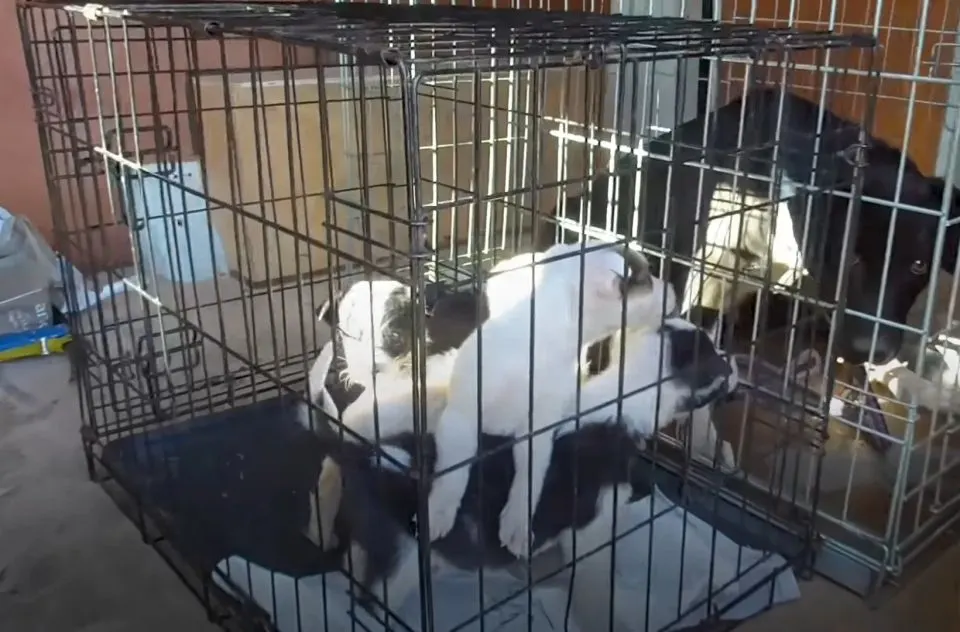
They also found a mother and more puppies who needed saving. They carefully approached the mom, who was scared and shaking.
But, after realizing they wanted to help, she relaxed enough and allowed them to take her and the babies somewhere safe.
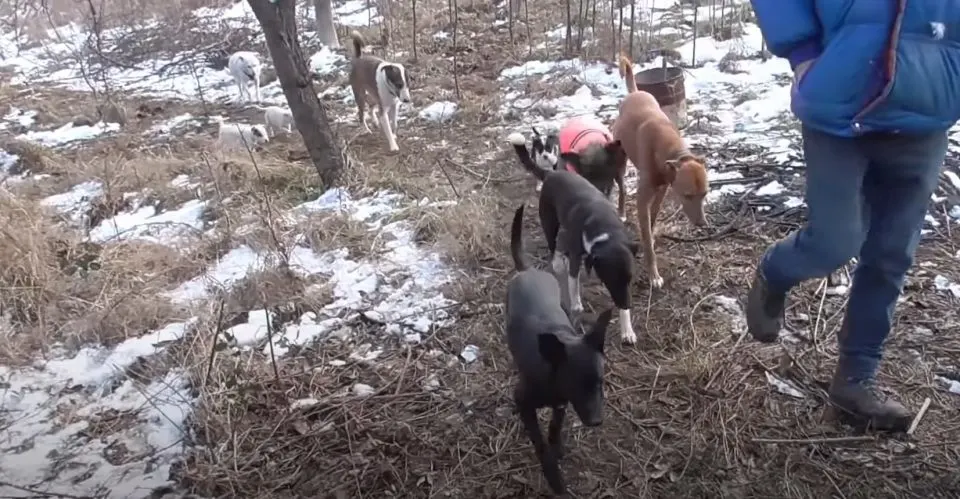
And finally, the mission was complete. Robert and his partner managed to secure and save every dog from the abandoned building.
They were taken to their shelter, where they all had a lot of food, water, and room to move around.
As for the adoption, many of the dogs and puppies from the building were taken in by a new family.
While we don’t have any information regarding the rest of them, I am confident that Robert and his crew found a forever home for all of them.
If you’ve ever shared a snack with your furry friend, you might have wondered about the potential dangers lurking in your favorite treat. Chocolate, a beloved indulgence for many, can pose a serious risk to our canine companions. As a seasoned dog trainer, understanding the impact of certain foods on dogs is crucial to keeping them safe and healthy.
You’re probably aware that chocolate isn’t a dog’s best friend, but do you know just how much is too much? The toxic effects of chocolate on dogs can vary depending on factors like the type of chocolate, the size of the dog, and the amount ingested. Being mindful of what your dog consumes is key to preventing any mishaps that could lead to a trip to the vet.
Understanding Chocolate Toxicity in Dogs
Knowing the dangers of chocolate for your furry friend is crucial. Here, we break down the specifics of chocolate toxicity in dogs:
-
Type of Chocolate Matters:
- Dark chocolate is the most dangerous, containing higher levels of theobromine.
- Milk chocolate is less toxic but can still pose risks, especially in larger quantities.
- White chocolate has the lowest theobromine content and is least harmful.
-
Size Matters Too:
- Smaller dogs are at higher risk as they can’t metabolize theobromine as effectively as larger breeds.
- Even small amounts of chocolate can be toxic to tiny pups.
-
Symptoms of Chocolate Toxicity:
- Look out for symptoms like vomiting, diarrhea, rapid breathing, increased heart rate, and seizures.
- In severe cases, chocolate poisoning can be fatal.
- If you suspect your dog has ingested chocolate, contact your vet immediately.
- The sooner treatment is administered, the better the outcome for your furry companion.
Remember, prevention is better than cure when it comes to chocolate and your canine pal. Be vigilant, keep chocolate out of their reach, and ensure their safety at all times.
Types of Chocolate and Their Toxicity Levels
When it comes to chocolate toxicity in dogs, the type of chocolate consumed plays a crucial role. Different types of chocolate contain varying levels of theobromine, a key compound that is harmful to dogs. Here are the common types of chocolate along with their toxicity levels for dogs:
- Dark Chocolate:
Dark chocolate is the most dangerous for dogs due to its high theobromine content. It contains approximately 130-450 milligrams of theobromine per ounce. Even small amounts of dark chocolate can be toxic to dogs, especially small breeds. - Milk Chocolate:
Milk chocolate contains a moderate amount of theobromine, ranging from 44-58 milligrams per ounce. While it is less toxic than dark chocolate, ingestion of larger quantities can still pose a risk to your furry friend. - White Chocolate:
White chocolate has the lowest theobromine content among the three types, with only trace amounts present. Although it is the least harmful, it’s still advisable to prevent dogs from consuming white chocolate to avoid any potential risks.
Remember, the size of your dog and the amount of chocolate ingested also influence the severity of the toxic effects. Be vigilant and ensure that your canine companion does not have access to any type of chocolate to keep them safe and healthy. If you suspect your dog has ingested chocolate, contact your vet immediately for guidance and treatment. Prevention is always better than cure when it comes to chocolate toxicity in dogs.
Symptoms of Chocolate Poisoning in Dogs
When it comes to your furry friend’s well-being, recognizing the symptoms of chocolate poisoning is crucial. Here are some signs that may indicate your dog has ingested chocolate:
- Vomiting: If you notice your dog throwing up repeatedly, it could be a sign of chocolate toxicity.
- Diarrhea: Chocolate can upset your dog’s stomach, leading to diarrhea. Keep an eye on your pet’s bathroom habits.
- Rapid Breathing: An increase in your dog’s breathing rate could be a symptom of chocolate ingestion.
- Increased Heart Rate: Chocolate contains substances that can elevate your dog’s heart rate. Monitor for an unusually fast heartbeat.
- Seizures: In severe cases, chocolate poisoning can result in seizures in dogs. If your dog experiences a seizure, it’s a medical emergency.
Recognizing these symptoms promptly is vital. If you observe any of these signs or suspect your dog has eaten chocolate, contact your vet immediately. Quick action can make a significant difference in your dog’s treatment and recovery. Remember, prevention is the best approach – always keep chocolate out of your dog’s reach to keep them safe and healthy.
Treatment Options for Chocolate Toxicity in Dogs
When it comes to treating chocolate toxicity in dogs, there are specific steps that need to be taken promptly. Remember, time is of the essence in these situations, and quick action can make a significant difference in your furry friend’s recovery.
- Immediate Veterinary Attention: Contact your vet or an emergency animal clinic as soon as you suspect your dog has ingested chocolate. Provide them with all the necessary information about the type and amount of chocolate consumed.
- Symptomatic Treatment: The vet may induce vomiting or administer activated charcoal to help your dog eliminate the toxins. This is usually done within a few hours of chocolate ingestion.
- Monitoring and Support: Your dog may need to be monitored closely for symptoms such as seizures, irregular heart rate, or hyperactivity. Supportive care, including IV fluids, may be necessary depending on the severity of the toxicity.
- Follow-Up Care: After the initial treatment, follow any instructions provided by your vet for at-home care, medication, or further monitoring. It’s crucial to ensure your dog fully recovers and doesn’t experience any long-term effects from the chocolate poisoning.
- Preventive Measures: Take steps to prevent future incidences by keeping all chocolate and cocoa-containing products out of your dog’s reach. Educate yourself on toxic foods for dogs to avoid any accidental ingestions in the future.
By acting swiftly and following the vet’s guidance, you can help your dog recover from chocolate toxicity and prevent similar incidents in the future. Remember, your quick response can save your beloved pet’s life.
Preventing Chocolate Poisoning Incidents in Dogs
To safeguard your furry companion from the dangers of chocolate toxicity, here are some essential prevention tips to keep in mind:
1. Store Chocolate Securely
Ensure that all chocolate products are stored in a place that is completely inaccessible to your dog. Consider keeping them in closed cabinets or high shelves where your pet cannot reach.
2. Raise Awareness
Educate family members and visitors about the harmful effects of chocolate on dogs. Remind them not to share any chocolate treats with your pet, no matter how much they beg with those adorable eyes.
3. Opt for Dog-Friendly Treats
When offering treats to your dog, stick to safe and dog-friendly options. There are plenty of delicious treats specifically designed for canine consumption that your pet will enjoy without any risks.
4. Be Cautious During Holidays
Be extra vigilant during holidays like Halloween, Easter, or Christmas when chocolate treats are abundant. Keep a close eye on your dog and ensure they do not have access to any chocolate lying around the house.
5. Supervise Your Dog
Always supervise your dog, especially around areas where chocolate might be present. Quick intervention can prevent accidental ingestion and potential poisoning incidents.
6. Emergency Contact Info
Keep your veterinarian’s contact information readily available at home or saved in your phone. In case of any suspected chocolate ingestion, you can act swiftly by contacting them for guidance.
By following these preventive measures, you can create a safe environment for your canine companion and minimize the risk of chocolate poisoning incidents. Remember, a little caution today can keep your dog healthy and happy for years to come.
Conclusion
Remember, chocolate can be extremely harmful to your furry friend. Knowing the symptoms of chocolate poisoning and taking immediate action is crucial. By following simple prevention tips like keeping chocolate out of reach and opting for dog-safe treats, you can protect your dog from potential dangers. Stay vigilant, especially during holidays, and always have your vet’s contact details on hand. Your efforts in creating a safe environment for your dog will go a long way in ensuring their health and happiness.
Frequently Asked Questions
Is chocolate harmful to dogs?
Yes, chocolate is toxic to dogs because it contains theobromine, which can lead to symptoms like vomiting, diarrhea, rapid breathing, and even seizures. Immediate veterinary care is crucial if a dog ingests chocolate.
How can I prevent chocolate poisoning in my dog?
To prevent chocolate toxicity, store chocolate securely out of your dog’s reach, educate others about its dangers, opt for dog-friendly treats, be cautious during holidays when chocolate is abundant, supervise your dog around chocolate, and keep your vet’s contact information handy.
Why is proactive prevention important?
Proactive prevention is vital to create a safe environment for dogs, reduce the risk of chocolate poisoning incidents, and safeguard their well-being and longevity. By implementing preventive measures, you can help ensure the health and safety of your canine companion.
[no_toc]

Hey there, I’m Janet Brooks, a dog-loving student from California. I’m all about helping pups in need, especially those without homes. Me and my awesome friends work together to give shelter and love to stray dogs. Oh, and I also write blogs about dogs to share helpful info.